Abstract
Examination of root systems and adhering soil associated with unusually green corn plants from nitrogen-deficient areas in fields has revealed higher acetylene-reducing activities than comparable root systems of chlorotic plants that appeared to be nitrogen deficient. From the root systems with acetylene-reducing activity, N2-fixing Enterobacter cloacae were isolated. Pure cultures of the organism grown in a medium lacking added fixed nitrogen reduced acetylene to ethylene and used N2 as a sole source of nitrogen under anaerobic conditions. Acetylene reduction was strikingly inhibited by 0.04 atm or greater partial pressures of O2; however, the bacteria maintained appreciable acetylene-reducing rates in medium exposed to partial pressures of O2 ranging from 0.005 to 0.015 atm. Nitrogenase activity in cell-free extracts of the bacterium was dependent upon Na2S2O4 and an ATP-generating system. Some environmental conditions expected to influence N2 fixation by free-living N2-fixing bacteria on root surfaces of nonlegumes are discussed.
Keywords: Enterobacter cloacae, acetylene reduction, nonleguminous plants
Full text
PDF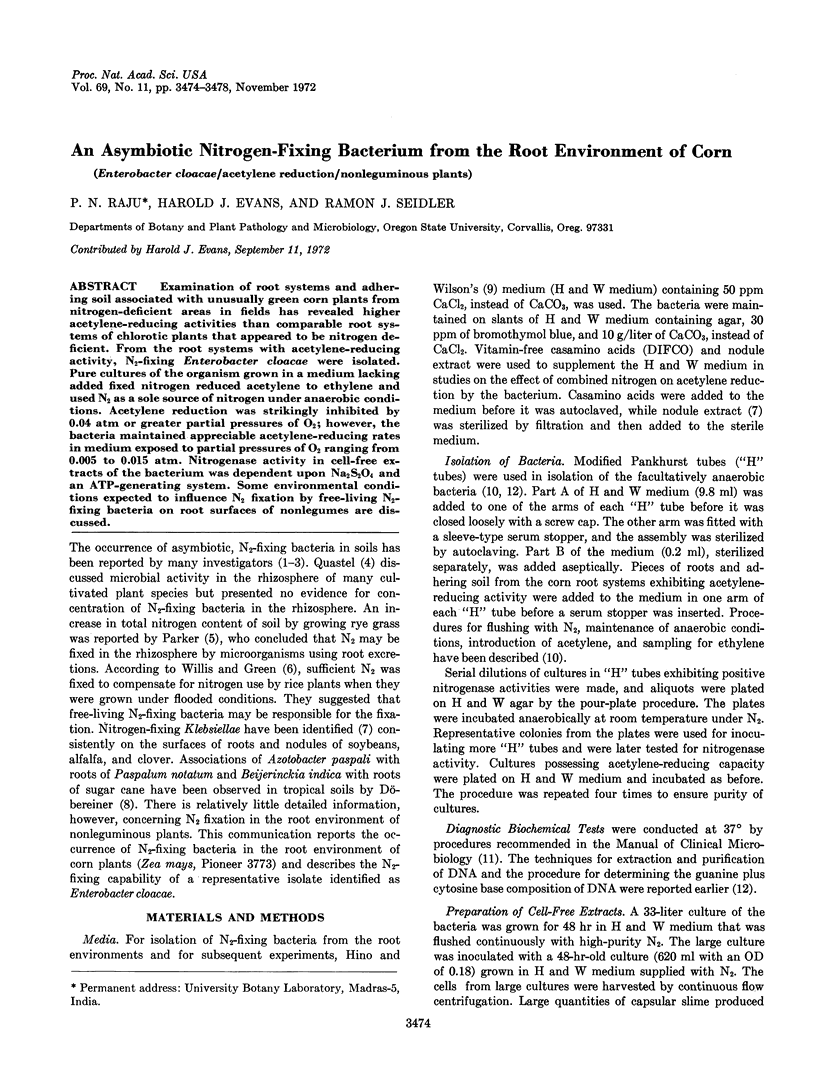
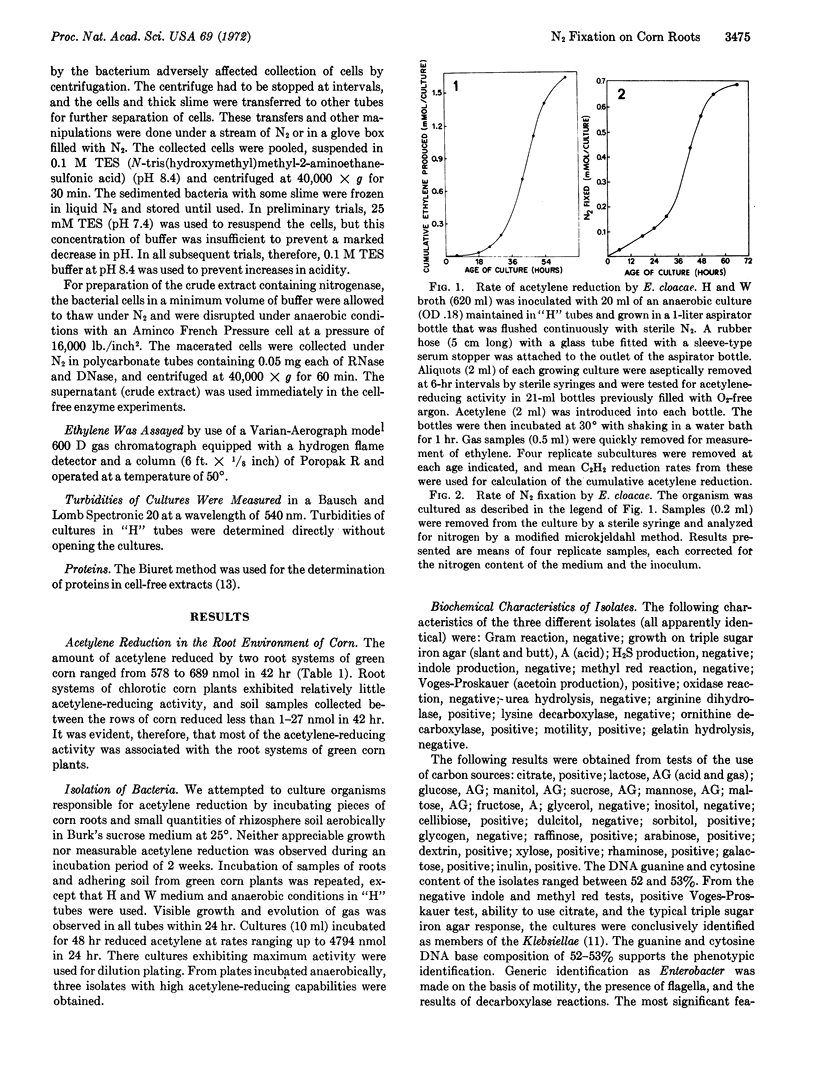
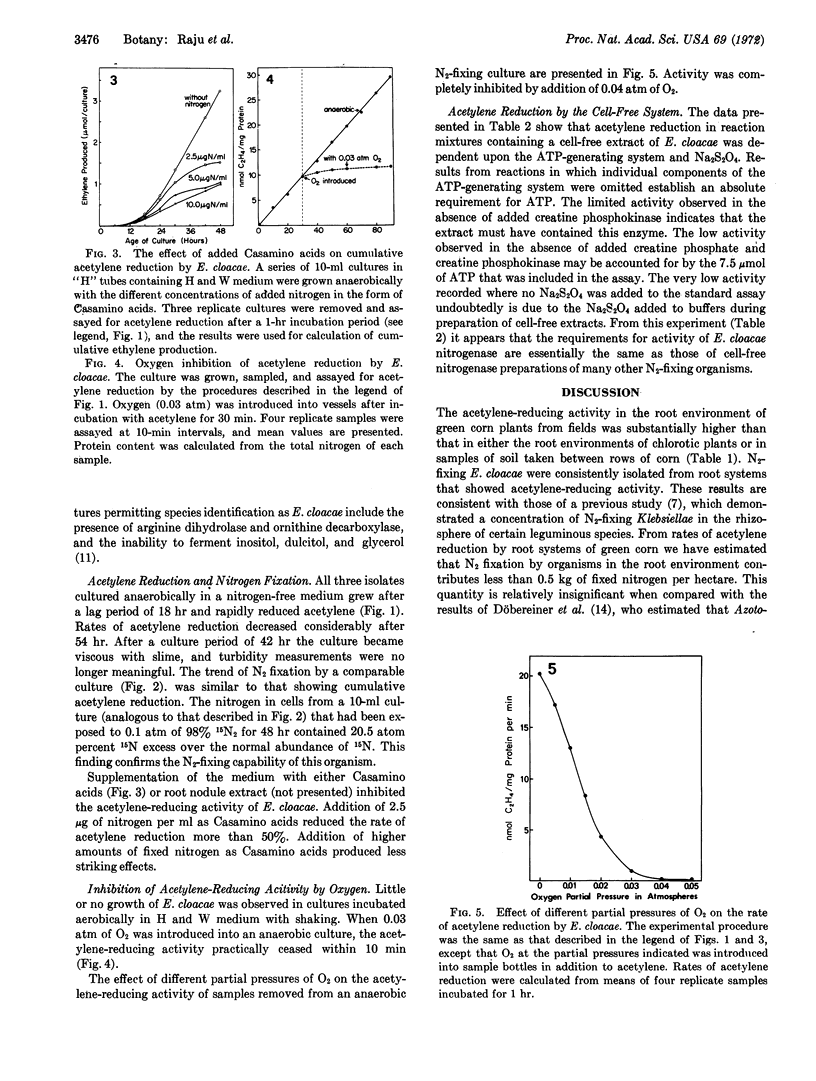
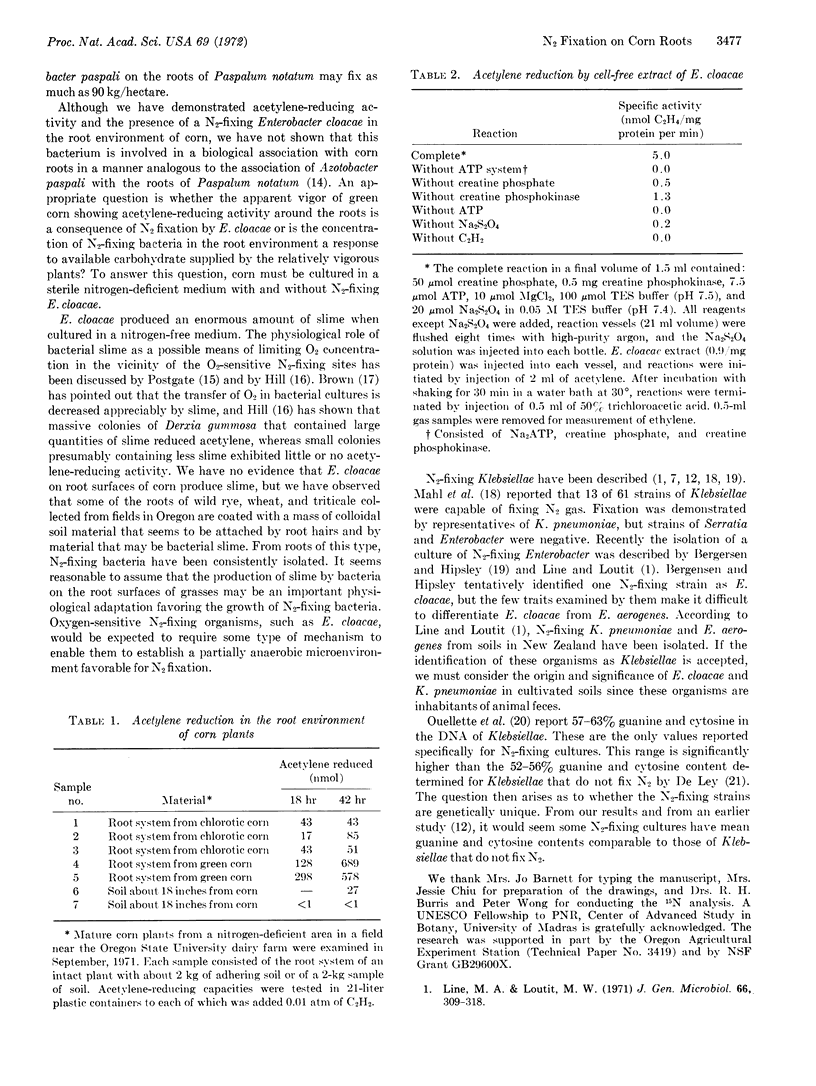
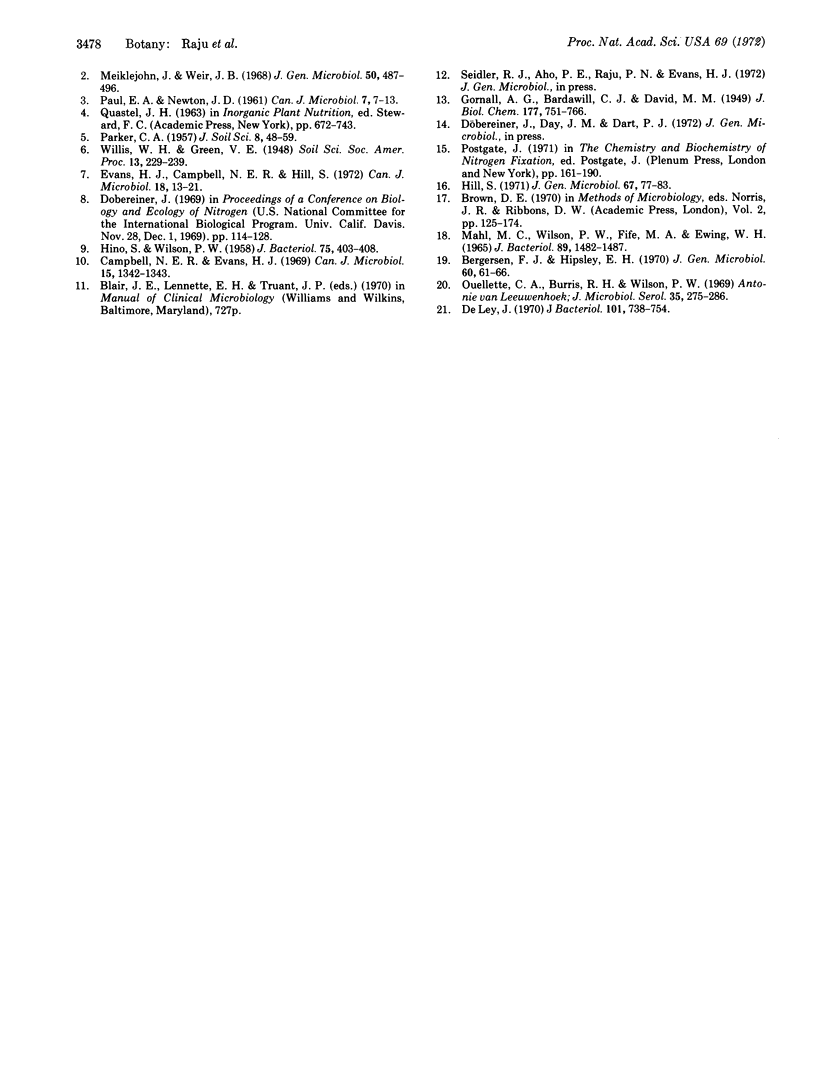
Selected References
These references are in PubMed. This may not be the complete list of references from this article.
- Bergersen F. J., Hipsley E. H. The presence of N2-fixing bacteria in the intestines of man and animals. J Gen Microbiol. 1970 Jan;60(1):61–65. doi: 10.1099/00221287-60-1-61. [DOI] [PubMed] [Google Scholar]
- Campbell N. E., Evans H. J. Use of Pankhurst tubes to assay acetylene reduction by facultative and anaerobic nitrogen-fixing bacteria. Can J Microbiol. 1969 Nov;15(11):1342–1343. doi: 10.1139/m69-243. [DOI] [PubMed] [Google Scholar]
- De Ley J. Reexamination of the association between melting point, buoyant density, and chemical base composition of deoxyribonucleic acid. J Bacteriol. 1970 Mar;101(3):738–754. doi: 10.1128/jb.101.3.738-754.1970. [DOI] [PMC free article] [PubMed] [Google Scholar]
- Evans H. J., Campbell N. E., Hill S. Asymbiotic nitrogen-fixing bacteria from the surfaces of nodules and roots of legumes. Can J Microbiol. 1972 Jan;18(1):13–21. doi: 10.1139/m72-003. [DOI] [PubMed] [Google Scholar]
- HINO S., WILSON P. W. Nitrogen fixation by a facultative bacillus. J Bacteriol. 1958 Apr;75(4):403–408. doi: 10.1128/jb.75.4.403-408.1958. [DOI] [PMC free article] [PubMed] [Google Scholar]
- MAHL M. C., WILSON P. W., FIFE M. A., EWING W. H. NITROGEN FIXATION BY MEMBERS OF THE TRIBE KLEBSIELLEAE. J Bacteriol. 1965 Jun;89:1482–1487. doi: 10.1128/jb.89.6.1482-1487.1965. [DOI] [PMC free article] [PubMed] [Google Scholar]
- Meiklejohn J., Weir J. B. Nitrogen-fixers--pseudomonads and other aerobic bacteria--from Rhodesian soils. J Gen Microbiol. 1968 Mar;50(3):487–496. doi: 10.1099/00221287-50-3-487. [DOI] [PubMed] [Google Scholar]
- Ouellette C. A., Burris R. H., Wilson P. W. Deoxyribonucleic acid base composition of species of Klebsiella, Azotobacter and Bacillus. Antonie Van Leeuwenhoek. 1969;35(3):275–286. doi: 10.1007/BF02219149. [DOI] [PubMed] [Google Scholar]
- PAUL E. A., NEWTON J. D. Studies of aerobic non-symbiotic nitrogen-fixing bacteria. Can J Microbiol. 1961 Feb;7:7–13. doi: 10.1139/m61-002. [DOI] [PubMed] [Google Scholar]


